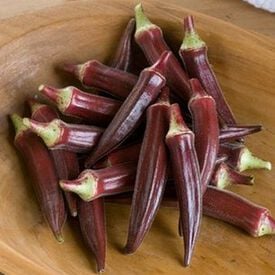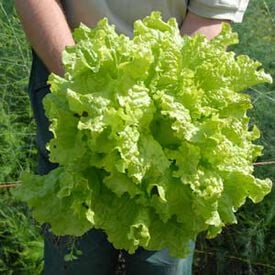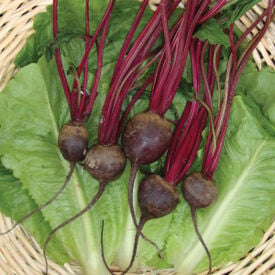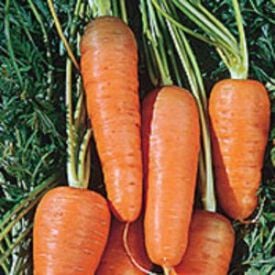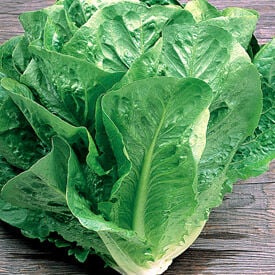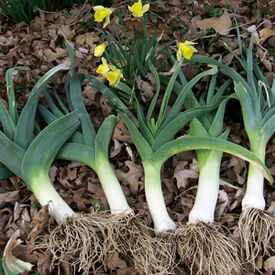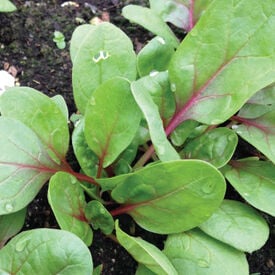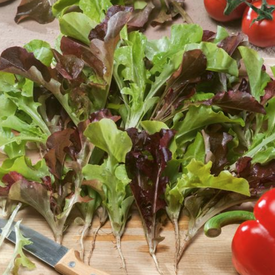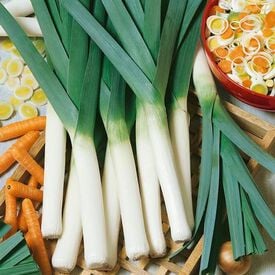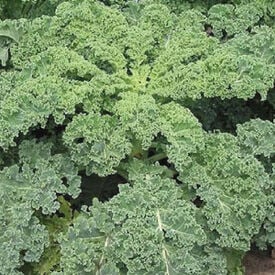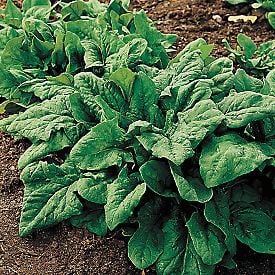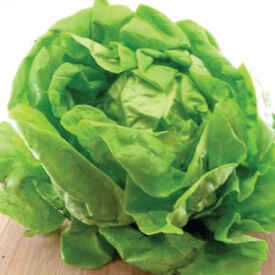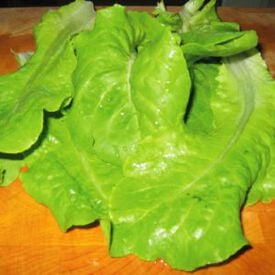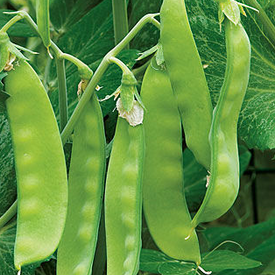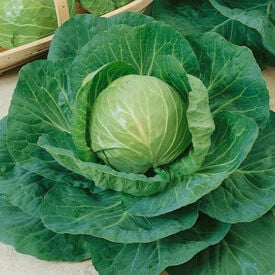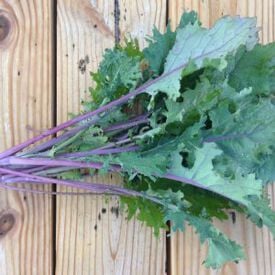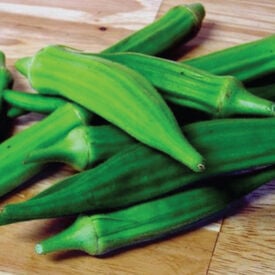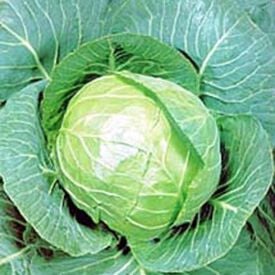The Red Burgundy Okra is a deep red variety that produces a tender and delicious pod. This productive burgundy red okra adds a nice crunch, delicious flavor and beautiful color to any soup or stew, especially gumbo!
The Black Seeded Simpson Lettuce is a very early and dependable lettuce. This large upright, compact leaf-type lettuce produces delicious light green, wide, curled leaves. The Black Seeded Simpson is a productive variety!
The Detroit Dark Red is the standard all-purpose heirloom beet! This is by far the most popular beet for home gardens. Detroit Dark Red has blood red flesh that is very sweet and tasty. Beets are perfectly round with no rings or streaks. Has 13-16" greens that are wonderful mixed into salads. Very prolific and good keeper. This heirloom was first introduced in 1892 by Mr. Reeves of Ontario, Canada.
Red Cored Chantenay carrots are a vibrant variety known for their distinct color and shape. They feature a deep orange skin that transitions to a striking red core, creating a visually appealing contrast. The carrots have a stout, conical shape, tapering at the end, which makes them easy to harvest and handle. These carrots are celebrated for their sweet, rich flavor and crisp texture, making them ideal for both raw snacking and cooking. They’re versatile in the kitchen, lending themselves well to roasting, steaming, or incorporating into salads. Red Cored Chantenay carrots are also known for their high nutrient content, providing a good source of vitamins and minerals. Their unique coloration is not only attractive but also indicates a high level of antioxidants, contributing to their health benefits.
The Green Towers Lettuce is an easy to grow, tasty green leaf lettuce. This lettuce variety offers a mild flavor with an attractive semi-savoyed texture. The Green Towers is a favorite for its adaptability and dense habit! This lettuce will grow great in any climate!
The Large American Flag leek is a non-bulbing leek variety that forms creamy stalks. This leek'15-18" inch stalks are 3" inches wide and are yummy! The Large American is widely adapted and the sweetest member of the onion family.
The red veined Red Tabby Spinach has beautiful tender smooth leaves. This variety is an excellent baby leaf spinach that does well in spring, fall and winter. Its uniform, smooth leaves grow straight and upright. Red Tabby is also resistant to downy mildew races 1-13.
The Bistro Blend is a component mixture of loose leaf lettuce and batavian varieties. All the varieties in this blend have been selected for sweet flavor and thick leaves that stand up well in a rough chopped salad. This blend's colors range from red, bronze, dark green and bright green. This Bistro Blend is a garden favorite with production all year long.
The hardy American Flag leek is a good variety for both home and market growers. The attractive uniform leek has blue green leaves and white stalks. The American Flag variety has a very nice sweet flavor. This leek can be enjoyed during fall and winter. Certified Organic. Learn more about our organic seeds.
The Blue Curled Scotch Kale can be used as a garnish and or in hearty winter dishes. This kale variety is a compact plant with very tender, blue-green, crinkled leaves that are quite delicious, very cold hardy, and rich in vitamin A.
The super sweet Renegade Spinach is simply the best all-around Spinach! This very adaptable spinach variety is early maturing with heavy yields and is easy to grow. Its dark green, rounded leaves are resistant to mildew and arise profusely on compact plants. Renegade is perfect for beginning gardeners and those that have been let down by other varieties!
Bibb is a crisp, clean, and easy to grow butterhead lettuce that has light green leaves with the occasional red spots. The crispy heads often self blanch in the center. This lettuce variety is perfect for farmers markets and for the home gardener. This Bibb does well in the heat, yet still grows quickly in our cool weather. Lt. John B. Bibb served in the War of 1812, represented Logan County in the Kentucky House of Representatives and the state Senate from 1827 to 1834. Lt. Bibb was also an amateur horticulturist and developed the Bibb lettuce we know and love today. However, it wasn't offered commercially until 1935.
Buttercrunch lettuce seeds produce a popular variety known for its crisp, tender leaves and sweet, buttery flavor. This heirloom variety features thick, light green leaves that form a loose, rosette shape, making it visually appealing in the garden and on the plate. Buttercrunch lettuce is known for its ability to tolerate heat better than many other lettuces, which allows for extended growing seasons. The leaves are slightly wavy and have a delicate texture, making them perfect for salads, sandwiches, and wraps. They also hold up well in dressings, adding a delightful crunch. When grown from seed, Buttercrunch lettuce typically germinates quickly, with seedlings developing into lush heads in a relatively short time. It thrives in cooler weather, making it an excellent choice for spring and fall gardens. Overall, Buttercrunch lettuce seeds offer a reliable and delicious option for home gardeners seeking to enjoy fresh, homegrown greens!
The Oregon Sugar Pod II Pea is a high yielding snow pea that has a high percentage of two pods per cluster! This variety grows to a height of 28" and bears 4 1/2" long pods that are disease resistant to pea virus, common wilt and powdery mildew. The Oregon Sugar Pod II produces delicious flat and tender pea pods that are superb for freezing!
New 50 day maturing bright green mini cabbage. Excellent uniformity, mild flavor and crispness are true bonuses with this extremely early maturing cabbage. Can be sown directly in Fall gardens or transplanted in Spring.
The Red Russian Kale is a very tender, colorful specialty kale for salad mix and bunching. This variety is a special, refined strain. Its stems are purple and leaves are deep gray-green with purple veins. This flat, noncurled, and tooth-edged kale has a wonderful taste. Red Russian matures medium-tall and leaves are tender compared to other kales.
The Emerald Okra is a beautifully bright early maturing okra variety! This okra is an old heirloom variety from the 1950's that was first developed by the Campbell's Soup Company. This variety produces straight okra that keeps its vibrant green color even after being cooked. Emerald Okra is best harvested between 3-4" for the most tender and tasty pods.
The Golden Acre is a tasty cabbage that arrives early and is suited for close spacing. This early round head cabbage is easily grown and versatile in use. Heads are about 6 to 7 inches in diameter on compact plants about a foot high. Its firm, medium green head is excellent cooked or raw in stews and salads.
